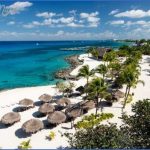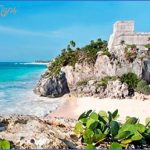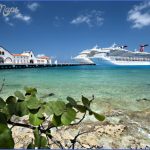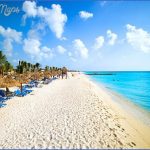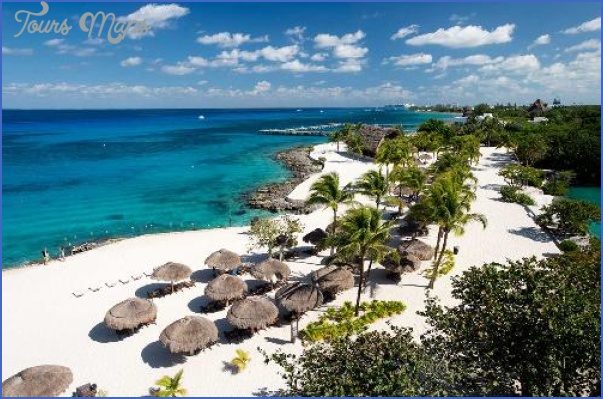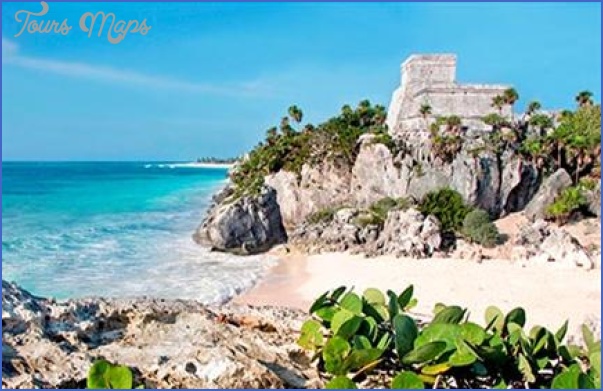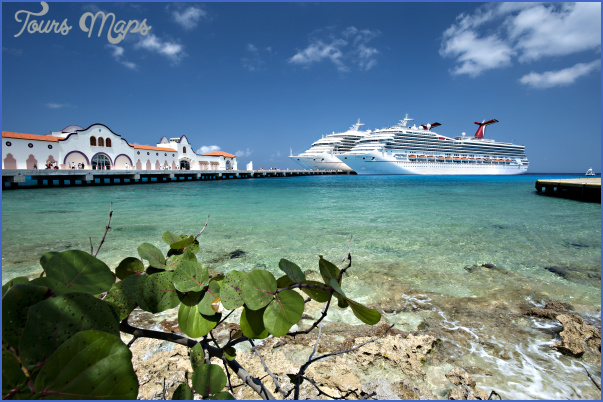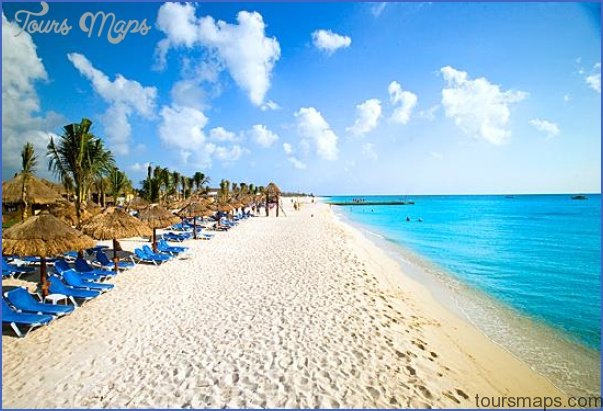The island of Cozumel, just off Mexico’s Yucatan coast, is one of the busiest cruise ports on the planet, with up to 16 ships visiting every day during high season, counting those that anchor offshore and ferry in passengers. All that activity can make the port town of San Miguel seem more like Times Square than the sleepy, refreshingly gritty town it once was. Outside town, though, development hasn’t destroyed the island’s natural beauty, including acres of low-lying scrub forest containing protected plant and animal species.
Doing the Yucatan Ruins
The largest and most fabled of the Yucatan ruins, Chichen Itza (meaning Mouth of the Well of the Itza Family) was founded in a.d. 445 by the Mayans and later inhabited by the Toltecs of central Mexico. At its height, the city had about 50,000 residents, but it was relinquished to the surrounding jungle in the early 13th century. The area covers 18 sq. km (7 sq. miles), so you can see only a fraction of it on a day trip. What you will see is the magnificent El Castillo pyramid, intricately built with the Maya calendar in mind; the Sacred Cenote, where sacrificial victims were drowned; the wonderfully preserved Ball Court (Juego de Pelota); the richly carved Temple of the Warriors; the evocative Temple of the Jaguars, and the gruesome Temple of the Skulls (Tzompantli).
Only a 30-minute drive from Playa del Carmen, the small walled city of Tulum is the single-most-visited Maya ruin. From its dramatic perch atop seaside cliffs, you can see wonderful panoramic views of the Caribbean. Tulum’s ruins include a temple to Kukulkan, the primary Maya/Olmec god; the Temple of the Frescoes, the Temple of the Descending God, the House of Columns, and the House of the Cenote. There’s also a sliver of silky beach below the site, so bring your bathing suit for a refreshing dip.
A 35-minute drive northwest of Tulum, Coba was once one of the most important city-states in the Maya empire; its pyramid, Nohoch Mul, is the tallest in the Yucatan. Archaeologists estimate that only a small percentage of this dead city has yet been uncovered; its 81 primitive acres provide excellent opportunities for exploration by hikers.
For us the major allure of Cozumel remains its proximity to the ancient Mayan ruins on the Yucatan Peninsula (see the box above), which are generally offered as day-trip excursions. In recent years, a handful of mainland Yucatan ports have also come onto the scene: Playa del Carmen, which is a 45-miute ferry ride from Cozumel; Calica, just south of Playa, where there’s little more than a pier; Progreso, on the Gulf coast of the Yucatan, making it the closest to Chichen Itza, as well as the city of Merida; and Costa Maya, about 161km (100 miles) south near the sleepy fishing village of Mahajual. under the sea Offshore, 32km (20 miles) of coral reefs have been set aside as an underwater national park, including the stunning Palancar Reef, the world’s second-largest natural coral formation. cheesy but fun Just south of the cruise terminals, the Discover Mexico theme park (www.discovermexicopark.com ) offers scale models of Mexico’s most famous archaeological sites and colonial buildings. for nature lovers About a $10 taxi ride from the center of San Miguel, the Chankanaab Nature Park (www.cozumelparks.com ) is a combination archaeological park, botanical garden, and wildlife sanctuary (crocodiles! sea lions!), with a wide white-sand beach and underwater statues for snorkelers to admire. top beach Cozumel’s best powdery white-sand beach, Playa San Francisco, stretches for some 5km (3 miles) along the southwestern shoreline.
COZUMEL & MEXICO CRUISES Photo Gallery
Maybe You Like Them Too
- STAR CLIPPERS CRUISES TRAVEL GUIDE
- JAMAICA CRUISES
- TRAVEL TO CABO SAN LUCAS CRUISES
- NORWEGIAN CRUISE LINE CRUISES TRAVEL GUIDE
- Passports & Identification FOR CRUISE TRAVEL

